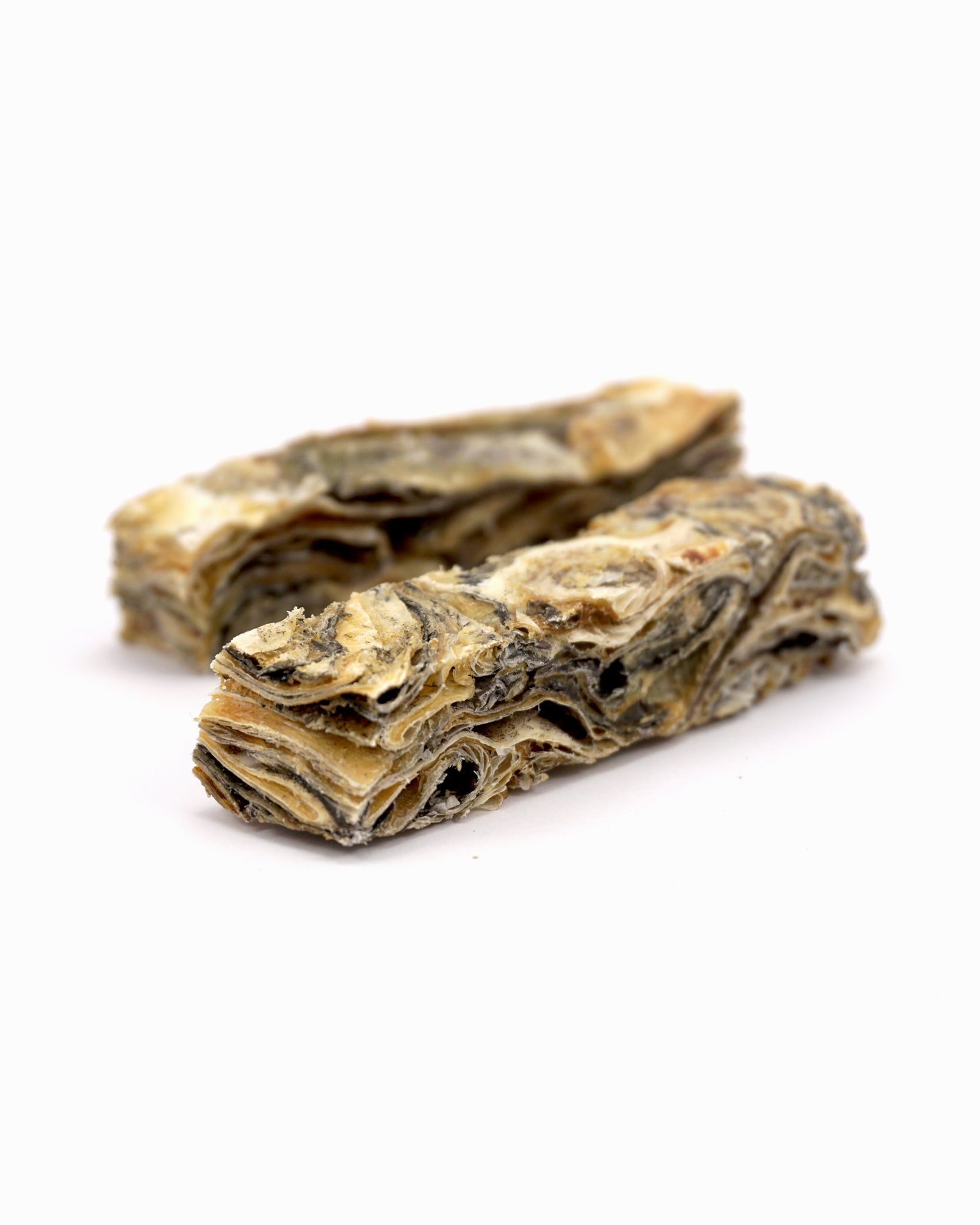Positive Reinforcement Dog Training | Training with Rewards

With the plethora of training methods available to dog owners, positive reinforcement has risen as a beacon of effective and humane training practices. Harnessing the power of rewards to encourage desired behaviours, positive reinforcement dog training stands as a testament to the strength of the bond between humans and their canine companions.
In today's market, an array of training tools and techniques flood the shelves, each claiming to be the ultimate solution for teaching and shaping your dog's behaviour. As dog parents seek guidance on the best methods to nurture their furry friends, questions are abundant regarding the efficacy, practicality, and long-term impact of positive reinforcement techniques.
A study by Emily J. Blackwell revealed that of the 88% of dogs trained, 16% were trained exclusively with positive reinforcement, highlighting its growing popularity and effectiveness in the training landscape.
What is positive reinforcement?
Positive reinforcement dog training is a powerful method that focuses on rewarding desired behaviours to encourage their repetition. By offering rewards such as treats, toys, or attention immediately after your dog exhibits a desired behaviour, you reinforce the desired behaviour, making it more likely to occur in the future. This approach not only shapes behaviour but also establishes a strong foundation of trust and communication between you and your dog.
By consistently reinforcing desired behaviours with rewards, you create a positive learning environment that fosters cooperation and enthusiasm in your furry companion.
Positive reinforcement vs negative reinforcement: What is the difference?
Positive reinforcement and negative reinforcement are two distinct approaches in dog training, each with its own principles and effects. Positive reinforcement involves rewarding desired behaviours with treats, toys, or attention, reinforcing the behaviour and encouraging its repetition.
On the other hand, negative reinforcement revolves around removing or avoiding aversive stimuli to reinforce behaviour. Whilst positive reinforcement focuses on encouraging good behaviour through rewards, negative reinforcement relies on eliminating or reducing undesirable behaviour through avoidance or escape conditioning.
Understanding the differences between these two methods is essential for effective and humane training practices, allowing dog owners to choose the approach that best aligns with their training goals and values.
How to train your dog using positive reinforcement techniques
Positive reinforcement training involves several key techniques to effectively teach your dog new behaviours.

Timings in positive reinforcement training
Consistency in timing is crucial in positive reinforcement training. Deliver rewards promptly after your dog exhibits the desired behaviour to reinforce the connection between the behaviour and the reward. This helps your dog understand which actions are being rewarded, facilitating quicker learning and behaviour retention.
Optimal duration for training sessions
For puppies, shorter, more frequent training sessions are recommended due to their shorter attention spans and higher energy levels. Aim for multiple sessions throughout the day, each lasting around 5-10 minutes. This approach helps prevent overstimulation and ensures that your puppy stays focused and engaged.
On the other hand, senior dogs may have limitations in stamina and physical abilities, so it's essential to tailor training sessions to their needs. Whilst they may still benefit from short sessions, they may require longer rest periods in between. When training your senior dog, aim for sessions lasting around 10-15 minutes, allowing ample time for breaks and relaxation.
By adjusting the duration of training sessions based on your dog's age and individual characteristics, you can optimise learning and ensure a positive training experience for dogs of all ages.
Importance of consistency in positive reinforcement training
Consistency is paramount in positive reinforcement training. Use rewards and cues consistently to reinforce desired behaviours and communicate expectations to your dog. Consistent reinforcement helps establish clear boundaries and expectations, leading to more successful training outcomes over time.
Choosing the right rewards for your dog
Choosing the right rewards is essential for effective positive reinforcement training. Tailoring rewards to your dog's preferences and motivation ensures engagement and success in training sessions. By selecting rewards that captivate your dog's interest and provide immediate gratification, you create a strong incentive for desired behaviours. Understanding your dog's preferences and adjusting rewards accordingly fosters enthusiasm and accelerates learning, leading to a rewarding training experience for both you and your canine companion.

Dog treats
When selecting treats for positive reinforcement training, opt for high-value options that your dog finds irresistible. Choose treats with strong flavours and enticing aromas to capture your dog's attention and motivation. Ensure that the treats are small enough for your dog to eat quickly, encouraging immediate reinforcement of desired behaviours. For example, fish treats such as Skipper's Dog & Puppy Training Treats are a pleasing smell for your dog and are small enough for extended training periods. This quick consumption also prompts your dog to look to you for more, maintaining their focus and engagement during training sessions.
To prevent boredom, consider having a variety of treats on hand to keep training sessions exciting and stimulating for your dog. Rotating between different types of treats not only adds variety but also prevents your dog from becoming too accustomed to a particular reward, ensuring continued motivation and enthusiasm throughout the training process. By offering a range of enticing treats, you can keep your dog eager to participate and eager to learn.
Dog toys
Incorporating interactive toys or games as rewards adds an exciting dimension to training sessions, infusing them with fun and mental stimulation. These toys not only serve as rewards for good behaviour but also offer valuable opportunities for mental and physical exercise. When selecting toys, prioritise durability, safety, and appeal to your dog's unique interests. By choosing engaging and safe toys, you can ensure that training sessions remain enjoyable and your dog stays fully engaged.


Attention
Providing praise, petting, or play as rewards can deepen the bond between you and your dog, fostering a positive relationship built on trust and affection. Verbal praise and gentle gestures serve as powerful reinforcements, reinforcing desired behaviours and encouraging your dog's cooperation. By incorporating attention as a reward, you strengthen your dog's connection with you and cultivate their enthusiasm for training activities.
Tailoring dog treats to training difficulty levels
Adjusting the type and quantity of treats based on the difficulty of the training task can significantly enhance effectiveness and motivation.
Treats for low to moderate training difficulty
For simple commands or behaviours that your dog already knows well, opt for smaller, lower-value treats. These treats provide a quick and satisfying reward for your dog's compliance with familiar commands, maintaining their focus and enthusiasm during training sessions. Here are some dog treat suggestions:
Treats for high training difficulty
When tackling challenging tasks or behaviours that require extra motivation, offer higher-value treats or more substantial rewards. These treats serve as powerful incentives to encourage your dog's persistence and effort in mastering new skills or overcoming obstacles. Here are some dog treat suggestions:
Behaviour shaping techniques in positive reinforcement

Behaviour shaping in positive reinforcement training involves breaking desired behaviours into smaller steps, gradually reinforcing each one until the behaviour is fully learned and reliably performed. This technique guides dogs towards specific actions by rewarding successive approximations towards the target behaviour, allowing for the learning of complex behaviours through achievable milestones rather than expecting the full behaviour immediately.
For example, let's say you want to teach your dog to cross their paws on command. You can start by rewarding any interest or movement towards crossing their paws, such as lifting one paw slightly off the ground. Once your dog consistently shows this behaviour, you can then reward them for bringing one paw over the other, gradually shaping them to cross their paws. As your dog progresses, continue reinforcing each step, rewarding them for crossing their paws more fully until they can perform the behaviour reliably on command.
Identify the behaviour
Begin by pinpointing the specific behaviour you aim to modify or teach. This clarity will guide your training efforts towards a defined goal.
Break it down
Analyse the behaviour and deconstruct it into smaller, manageable steps. Breaking the behaviour into achievable milestones facilitates learning and ensures steady progress.
Reinforce successive approximations
Reward any behaviour that resembles the desired outcome, no matter how small. By reinforcing incremental progress, you encourage your dog to move closer to the target behaviour.
Gradually increase expectations
As your dog becomes proficient in each step, gradually raise the criteria for reinforcement. By setting higher standards over time, you promote continual improvement and refinement of the behaviour.
Consistency and patience
Maintain consistency and patience throughout your training. Positive reinforcement thrives on repetition and consistency, leading to lasting behaviour change.
Celebrate progress
Acknowledge and celebrate each success and milestone along the way. By recognising your dog's efforts and progress, you reinforce their motivation.
Frequently Asked Questions
Using positive reinforcement to stop barking
Utilising positive reinforcement techniques is an effective approach to addressing excessive barking in dogs. By rewarding moments of quiet behaviour and teaching alternative behaviours, such as "quiet" or "go to your bed," you can redirect your dog's attention and encourage more desirable responses. Positive reinforcement fosters a positive association with desired behaviours, ultimately helping to reduce excessive barking whilst strengthening the bond between you and your furry companion.
What do I do to deal with problematic dog behaviour?
In addressing problematic dog behaviour, positive reinforcement training offers a constructive approach. By redirecting unwanted behaviours through the reinforcement of desirable alternatives and providing clear cues and expectations, you can effectively modify your dog's behaviour.
Will using treats encourage my dog to become food dependent?
Although treats play a vital role in positive reinforcement training, concerns about food dependency can arise. However, by implementing a gradual phasing-out process as your dog learns behaviours and becomes more reliable in responding to cues, you can mitigate this risk. Over time, as your dog internalises the desired behaviours and gains confidence in their abilities, the reliance on treats diminishes naturally. This allows for a balanced approach to training that maintains motivation whilst ensuring your dog's independence and responsiveness beyond food rewards.
How to avoid weight gain when training with food
Maintaining your dog's optimal weight is crucial during training sessions. To prevent weight gain, carefully monitor your dog's calorie intake and adjust their regular meals accordingly. Consider using low-fat dog treats or reducing meal sizes to compensate for the additional calories provided during training. By implementing these strategies, you can ensure that your dog stays healthy and fit whilst still enjoying the benefits of positive reinforcement training.


























